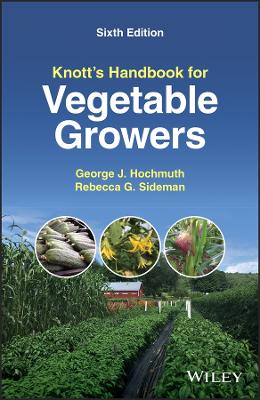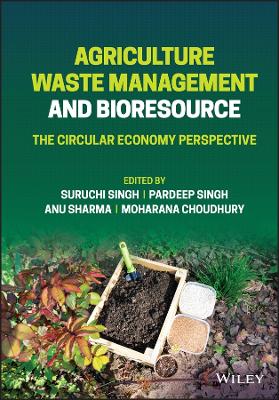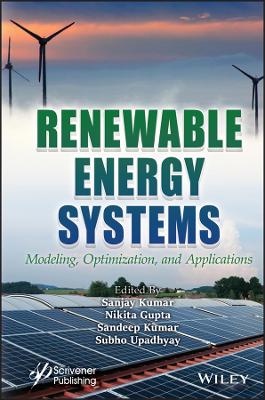Knott's Handbook for Vegetable Growers
 -15%
portes grátis
-15%
portes grátis
Knott's Handbook for Vegetable Growers
Hochmuth, George J.; Sideman, Rebecca G.
John Wiley & Sons Inc
10/2022
640
Mole
Inglês
9781119811077
15 a 20 dias
884
Descrição não disponível.
Preface to the Sixth Edition xi
About the Companion Website xvi
Part 1-Vegetables and the Vegetable Industry 1
01 Botanical Names of Vegetables and Common Names of Vegetables in Nine Languages 3
02 Edible Flowers 29
03 U.S. Vegetable Production 35
04 Consumption of Vegetables in The United States 42
05 World Vegetable Production 44
06 Nutritional Composition of Vegetables 46
Part 2-Vegetable Seeds 55
01 Seed Labels 57
02 Seed Germination Tests 58
03 Seed Germination Standards 66
04 Seed Production 67
05 Organic Seed Production 71
06 Seed Yields 72
07 Seed Storage 76
08 Seed Priming 78
09 Seedborne Pathogens and Hot Water Seed Treatment 81
10 Vegetable Varieties 84
11 Genetically-Engineered Vegetable Varieties 88
12 Vegetable Seed Sources 90
Part 3-Seedling and Transplant Production 99
01 Transplant Production 101
02 Plant Growing Containers 102
03 Seeds and Seeding 104
04 Temperature and Time Requirements 107
05 Plant Growing Mixes 108
06 Soil Sterilization 110
07 Fertilizing and Irrigating Transplants 111
08 Plant Growing Problems 115
09 Conditioning Transplants 120
10 Shipping and Transportation of Transplants 122
11 Grafted Transplants 123
12 Organic Transplant Production 124
13 Additional Transplant Production Resources 126
Part 4-Greenhouse and Protected Agriculture Production 127
01 Structures 129
02 Cultural Management 131
03 Co2 Enrichment 136
04 Soilless Culture 138
05 Nutrient Solutions 146
06 Tissue Composition 153
Part 5-Field Planting 155
01 Temperatures for Vegetables 157
02 Scheduling Successive Plantings 162
03 Time Required for Seedling Emergence 165
04 Seed Requirements 167
05 Planting Rates for Large Seeds 169
06 Spacing Of Vegetables 172
07 Precision Seeding 178
08 Conservation Tillage and No-Till Systems 181
09 Vegetative Propagation 183
10 Polyethylene and Degradable Mulches 186
11 Row Covers 191
12 Windbreaks 193
13 Environmental Monitoring: Soil, Water, and Air 195
Part 6-Soils and Fertilizers 199
01 Nutrient Best Management Practices (Bmps) 203
02 Organic Matter 206
03 Soil Health and Soil-Improving Crops 208
04 Manures and Other Organic Soil Ammendents 212
05 Organic Production Systems 216
06 Composting 218
07 Soil Texture 219
08 Soil Reaction 221
09 Salinity 229
10 Fertilizers 233
11 Fertigation 240
12 Fertilizer Conversion Factors 241
13 Nutrient Absorption 244
14 Plant Analysis 247
15 Soil Tests 276
16 Nutrient Deficiencies 292
17 Micronutrients 294
18 Fertilizer Spreaders 301
Part 7-Water and Irrigation 303
01 Suggestions for Supplying Water to Vegetables 307
02 Rooting of Vegetables 310
03 Soil Moisture and is Monitoring 311
04 Surface Irrigation 319
05 Overhead Irrigation 329
06 Drip or Trickle Irrigation 343
07 Irrigation Water Quality 360
Part 8-Vegetable Pests and Problems 365
01 Integrated Pest Management 367
02 Pest Management in Organic Production Systems 370
03 Soil Solarization 372
04 Pesticide-Use Precautions 375
05 Pesticide Application And Equipment 383
06 Vegetable Seed Treatments 399
07 Nematodes 402
08 Diseases 407
09 Insects 425
10 Abiotic Disorders 436
11 Air Pollution 446
12 Wildlife Control 450
Part 9-Weed Management 453
01 Weed Management Strategies 454
02 Weed Identification 457
03 Noxious Weeds 458
04 Weed Control an Organic Farming 459
05 Cover Crops and Rotation in Weed Management 461
06 Herbicides 462
07 Weed Control Recommendations 466
Part 10- Computer-Based Crop Management Technologies 467
Part 11- Harvesting, Handling, and Storage 475
01 Food Safety 478
02 General Postharvest Handling Procedures 484
03 Predicting Harvest Dates and Yields 489
04 Cooling Vegetables 496
05 Vegetable Storage 502
06 Chilling and Ethylene Injury 517
07 Postharvest Diseases 529
08 Vegetable Quality 535
09 U.S. Standards for Grade of Vegetables 538
10 Minimally Processed Vegetables 551
11 Packaging of Fresh Vegetables 554
12 Vegetable Marketing 560
Part 12-Appendix 565
01 Sources of Information on Vegetable Production 566
02 Some Periodicals for Vegetable Growers 567
03 U.S. Units of Measurement 569
04 Conversion Factors for U.S. Units 570
05 Metric Units of Measurement 573
06 Conversion Factors for Si and Non-Si Units 574
07 Conversions for Rates of Application 579
08 Water and Soil Solution Conversion Factors 580
09 Heat and Energy Equivalents and Definitions 584
10 Useful Websites for Units and Conversions 585
Index 587
About the Companion Website xvi
Part 1-Vegetables and the Vegetable Industry 1
01 Botanical Names of Vegetables and Common Names of Vegetables in Nine Languages 3
02 Edible Flowers 29
03 U.S. Vegetable Production 35
04 Consumption of Vegetables in The United States 42
05 World Vegetable Production 44
06 Nutritional Composition of Vegetables 46
Part 2-Vegetable Seeds 55
01 Seed Labels 57
02 Seed Germination Tests 58
03 Seed Germination Standards 66
04 Seed Production 67
05 Organic Seed Production 71
06 Seed Yields 72
07 Seed Storage 76
08 Seed Priming 78
09 Seedborne Pathogens and Hot Water Seed Treatment 81
10 Vegetable Varieties 84
11 Genetically-Engineered Vegetable Varieties 88
12 Vegetable Seed Sources 90
Part 3-Seedling and Transplant Production 99
01 Transplant Production 101
02 Plant Growing Containers 102
03 Seeds and Seeding 104
04 Temperature and Time Requirements 107
05 Plant Growing Mixes 108
06 Soil Sterilization 110
07 Fertilizing and Irrigating Transplants 111
08 Plant Growing Problems 115
09 Conditioning Transplants 120
10 Shipping and Transportation of Transplants 122
11 Grafted Transplants 123
12 Organic Transplant Production 124
13 Additional Transplant Production Resources 126
Part 4-Greenhouse and Protected Agriculture Production 127
01 Structures 129
02 Cultural Management 131
03 Co2 Enrichment 136
04 Soilless Culture 138
05 Nutrient Solutions 146
06 Tissue Composition 153
Part 5-Field Planting 155
01 Temperatures for Vegetables 157
02 Scheduling Successive Plantings 162
03 Time Required for Seedling Emergence 165
04 Seed Requirements 167
05 Planting Rates for Large Seeds 169
06 Spacing Of Vegetables 172
07 Precision Seeding 178
08 Conservation Tillage and No-Till Systems 181
09 Vegetative Propagation 183
10 Polyethylene and Degradable Mulches 186
11 Row Covers 191
12 Windbreaks 193
13 Environmental Monitoring: Soil, Water, and Air 195
Part 6-Soils and Fertilizers 199
01 Nutrient Best Management Practices (Bmps) 203
02 Organic Matter 206
03 Soil Health and Soil-Improving Crops 208
04 Manures and Other Organic Soil Ammendents 212
05 Organic Production Systems 216
06 Composting 218
07 Soil Texture 219
08 Soil Reaction 221
09 Salinity 229
10 Fertilizers 233
11 Fertigation 240
12 Fertilizer Conversion Factors 241
13 Nutrient Absorption 244
14 Plant Analysis 247
15 Soil Tests 276
16 Nutrient Deficiencies 292
17 Micronutrients 294
18 Fertilizer Spreaders 301
Part 7-Water and Irrigation 303
01 Suggestions for Supplying Water to Vegetables 307
02 Rooting of Vegetables 310
03 Soil Moisture and is Monitoring 311
04 Surface Irrigation 319
05 Overhead Irrigation 329
06 Drip or Trickle Irrigation 343
07 Irrigation Water Quality 360
Part 8-Vegetable Pests and Problems 365
01 Integrated Pest Management 367
02 Pest Management in Organic Production Systems 370
03 Soil Solarization 372
04 Pesticide-Use Precautions 375
05 Pesticide Application And Equipment 383
06 Vegetable Seed Treatments 399
07 Nematodes 402
08 Diseases 407
09 Insects 425
10 Abiotic Disorders 436
11 Air Pollution 446
12 Wildlife Control 450
Part 9-Weed Management 453
01 Weed Management Strategies 454
02 Weed Identification 457
03 Noxious Weeds 458
04 Weed Control an Organic Farming 459
05 Cover Crops and Rotation in Weed Management 461
06 Herbicides 462
07 Weed Control Recommendations 466
Part 10- Computer-Based Crop Management Technologies 467
Part 11- Harvesting, Handling, and Storage 475
01 Food Safety 478
02 General Postharvest Handling Procedures 484
03 Predicting Harvest Dates and Yields 489
04 Cooling Vegetables 496
05 Vegetable Storage 502
06 Chilling and Ethylene Injury 517
07 Postharvest Diseases 529
08 Vegetable Quality 535
09 U.S. Standards for Grade of Vegetables 538
10 Minimally Processed Vegetables 551
11 Packaging of Fresh Vegetables 554
12 Vegetable Marketing 560
Part 12-Appendix 565
01 Sources of Information on Vegetable Production 566
02 Some Periodicals for Vegetable Growers 567
03 U.S. Units of Measurement 569
04 Conversion Factors for U.S. Units 570
05 Metric Units of Measurement 573
06 Conversion Factors for Si and Non-Si Units 574
07 Conversions for Rates of Application 579
08 Water and Soil Solution Conversion Factors 580
09 Heat and Energy Equivalents and Definitions 584
10 Useful Websites for Units and Conversions 585
Index 587
Este título pertence ao(s) assunto(s) indicados(s). Para ver outros títulos clique no assunto desejado.
commercial farming; vegetable growing; vegetable industry; vegetable diseases; crop production; organic agriculture; computer-assisted technologies, robotic harvesting systems; soil health; soil conservation; farming production efficiency; modern farming
Preface to the Sixth Edition xi
About the Companion Website xvi
Part 1-Vegetables and the Vegetable Industry 1
01 Botanical Names of Vegetables and Common Names of Vegetables in Nine Languages 3
02 Edible Flowers 29
03 U.S. Vegetable Production 35
04 Consumption of Vegetables in The United States 42
05 World Vegetable Production 44
06 Nutritional Composition of Vegetables 46
Part 2-Vegetable Seeds 55
01 Seed Labels 57
02 Seed Germination Tests 58
03 Seed Germination Standards 66
04 Seed Production 67
05 Organic Seed Production 71
06 Seed Yields 72
07 Seed Storage 76
08 Seed Priming 78
09 Seedborne Pathogens and Hot Water Seed Treatment 81
10 Vegetable Varieties 84
11 Genetically-Engineered Vegetable Varieties 88
12 Vegetable Seed Sources 90
Part 3-Seedling and Transplant Production 99
01 Transplant Production 101
02 Plant Growing Containers 102
03 Seeds and Seeding 104
04 Temperature and Time Requirements 107
05 Plant Growing Mixes 108
06 Soil Sterilization 110
07 Fertilizing and Irrigating Transplants 111
08 Plant Growing Problems 115
09 Conditioning Transplants 120
10 Shipping and Transportation of Transplants 122
11 Grafted Transplants 123
12 Organic Transplant Production 124
13 Additional Transplant Production Resources 126
Part 4-Greenhouse and Protected Agriculture Production 127
01 Structures 129
02 Cultural Management 131
03 Co2 Enrichment 136
04 Soilless Culture 138
05 Nutrient Solutions 146
06 Tissue Composition 153
Part 5-Field Planting 155
01 Temperatures for Vegetables 157
02 Scheduling Successive Plantings 162
03 Time Required for Seedling Emergence 165
04 Seed Requirements 167
05 Planting Rates for Large Seeds 169
06 Spacing Of Vegetables 172
07 Precision Seeding 178
08 Conservation Tillage and No-Till Systems 181
09 Vegetative Propagation 183
10 Polyethylene and Degradable Mulches 186
11 Row Covers 191
12 Windbreaks 193
13 Environmental Monitoring: Soil, Water, and Air 195
Part 6-Soils and Fertilizers 199
01 Nutrient Best Management Practices (Bmps) 203
02 Organic Matter 206
03 Soil Health and Soil-Improving Crops 208
04 Manures and Other Organic Soil Ammendents 212
05 Organic Production Systems 216
06 Composting 218
07 Soil Texture 219
08 Soil Reaction 221
09 Salinity 229
10 Fertilizers 233
11 Fertigation 240
12 Fertilizer Conversion Factors 241
13 Nutrient Absorption 244
14 Plant Analysis 247
15 Soil Tests 276
16 Nutrient Deficiencies 292
17 Micronutrients 294
18 Fertilizer Spreaders 301
Part 7-Water and Irrigation 303
01 Suggestions for Supplying Water to Vegetables 307
02 Rooting of Vegetables 310
03 Soil Moisture and is Monitoring 311
04 Surface Irrigation 319
05 Overhead Irrigation 329
06 Drip or Trickle Irrigation 343
07 Irrigation Water Quality 360
Part 8-Vegetable Pests and Problems 365
01 Integrated Pest Management 367
02 Pest Management in Organic Production Systems 370
03 Soil Solarization 372
04 Pesticide-Use Precautions 375
05 Pesticide Application And Equipment 383
06 Vegetable Seed Treatments 399
07 Nematodes 402
08 Diseases 407
09 Insects 425
10 Abiotic Disorders 436
11 Air Pollution 446
12 Wildlife Control 450
Part 9-Weed Management 453
01 Weed Management Strategies 454
02 Weed Identification 457
03 Noxious Weeds 458
04 Weed Control an Organic Farming 459
05 Cover Crops and Rotation in Weed Management 461
06 Herbicides 462
07 Weed Control Recommendations 466
Part 10- Computer-Based Crop Management Technologies 467
Part 11- Harvesting, Handling, and Storage 475
01 Food Safety 478
02 General Postharvest Handling Procedures 484
03 Predicting Harvest Dates and Yields 489
04 Cooling Vegetables 496
05 Vegetable Storage 502
06 Chilling and Ethylene Injury 517
07 Postharvest Diseases 529
08 Vegetable Quality 535
09 U.S. Standards for Grade of Vegetables 538
10 Minimally Processed Vegetables 551
11 Packaging of Fresh Vegetables 554
12 Vegetable Marketing 560
Part 12-Appendix 565
01 Sources of Information on Vegetable Production 566
02 Some Periodicals for Vegetable Growers 567
03 U.S. Units of Measurement 569
04 Conversion Factors for U.S. Units 570
05 Metric Units of Measurement 573
06 Conversion Factors for Si and Non-Si Units 574
07 Conversions for Rates of Application 579
08 Water and Soil Solution Conversion Factors 580
09 Heat and Energy Equivalents and Definitions 584
10 Useful Websites for Units and Conversions 585
Index 587
About the Companion Website xvi
Part 1-Vegetables and the Vegetable Industry 1
01 Botanical Names of Vegetables and Common Names of Vegetables in Nine Languages 3
02 Edible Flowers 29
03 U.S. Vegetable Production 35
04 Consumption of Vegetables in The United States 42
05 World Vegetable Production 44
06 Nutritional Composition of Vegetables 46
Part 2-Vegetable Seeds 55
01 Seed Labels 57
02 Seed Germination Tests 58
03 Seed Germination Standards 66
04 Seed Production 67
05 Organic Seed Production 71
06 Seed Yields 72
07 Seed Storage 76
08 Seed Priming 78
09 Seedborne Pathogens and Hot Water Seed Treatment 81
10 Vegetable Varieties 84
11 Genetically-Engineered Vegetable Varieties 88
12 Vegetable Seed Sources 90
Part 3-Seedling and Transplant Production 99
01 Transplant Production 101
02 Plant Growing Containers 102
03 Seeds and Seeding 104
04 Temperature and Time Requirements 107
05 Plant Growing Mixes 108
06 Soil Sterilization 110
07 Fertilizing and Irrigating Transplants 111
08 Plant Growing Problems 115
09 Conditioning Transplants 120
10 Shipping and Transportation of Transplants 122
11 Grafted Transplants 123
12 Organic Transplant Production 124
13 Additional Transplant Production Resources 126
Part 4-Greenhouse and Protected Agriculture Production 127
01 Structures 129
02 Cultural Management 131
03 Co2 Enrichment 136
04 Soilless Culture 138
05 Nutrient Solutions 146
06 Tissue Composition 153
Part 5-Field Planting 155
01 Temperatures for Vegetables 157
02 Scheduling Successive Plantings 162
03 Time Required for Seedling Emergence 165
04 Seed Requirements 167
05 Planting Rates for Large Seeds 169
06 Spacing Of Vegetables 172
07 Precision Seeding 178
08 Conservation Tillage and No-Till Systems 181
09 Vegetative Propagation 183
10 Polyethylene and Degradable Mulches 186
11 Row Covers 191
12 Windbreaks 193
13 Environmental Monitoring: Soil, Water, and Air 195
Part 6-Soils and Fertilizers 199
01 Nutrient Best Management Practices (Bmps) 203
02 Organic Matter 206
03 Soil Health and Soil-Improving Crops 208
04 Manures and Other Organic Soil Ammendents 212
05 Organic Production Systems 216
06 Composting 218
07 Soil Texture 219
08 Soil Reaction 221
09 Salinity 229
10 Fertilizers 233
11 Fertigation 240
12 Fertilizer Conversion Factors 241
13 Nutrient Absorption 244
14 Plant Analysis 247
15 Soil Tests 276
16 Nutrient Deficiencies 292
17 Micronutrients 294
18 Fertilizer Spreaders 301
Part 7-Water and Irrigation 303
01 Suggestions for Supplying Water to Vegetables 307
02 Rooting of Vegetables 310
03 Soil Moisture and is Monitoring 311
04 Surface Irrigation 319
05 Overhead Irrigation 329
06 Drip or Trickle Irrigation 343
07 Irrigation Water Quality 360
Part 8-Vegetable Pests and Problems 365
01 Integrated Pest Management 367
02 Pest Management in Organic Production Systems 370
03 Soil Solarization 372
04 Pesticide-Use Precautions 375
05 Pesticide Application And Equipment 383
06 Vegetable Seed Treatments 399
07 Nematodes 402
08 Diseases 407
09 Insects 425
10 Abiotic Disorders 436
11 Air Pollution 446
12 Wildlife Control 450
Part 9-Weed Management 453
01 Weed Management Strategies 454
02 Weed Identification 457
03 Noxious Weeds 458
04 Weed Control an Organic Farming 459
05 Cover Crops and Rotation in Weed Management 461
06 Herbicides 462
07 Weed Control Recommendations 466
Part 10- Computer-Based Crop Management Technologies 467
Part 11- Harvesting, Handling, and Storage 475
01 Food Safety 478
02 General Postharvest Handling Procedures 484
03 Predicting Harvest Dates and Yields 489
04 Cooling Vegetables 496
05 Vegetable Storage 502
06 Chilling and Ethylene Injury 517
07 Postharvest Diseases 529
08 Vegetable Quality 535
09 U.S. Standards for Grade of Vegetables 538
10 Minimally Processed Vegetables 551
11 Packaging of Fresh Vegetables 554
12 Vegetable Marketing 560
Part 12-Appendix 565
01 Sources of Information on Vegetable Production 566
02 Some Periodicals for Vegetable Growers 567
03 U.S. Units of Measurement 569
04 Conversion Factors for U.S. Units 570
05 Metric Units of Measurement 573
06 Conversion Factors for Si and Non-Si Units 574
07 Conversions for Rates of Application 579
08 Water and Soil Solution Conversion Factors 580
09 Heat and Energy Equivalents and Definitions 584
10 Useful Websites for Units and Conversions 585
Index 587
Este título pertence ao(s) assunto(s) indicados(s). Para ver outros títulos clique no assunto desejado.







